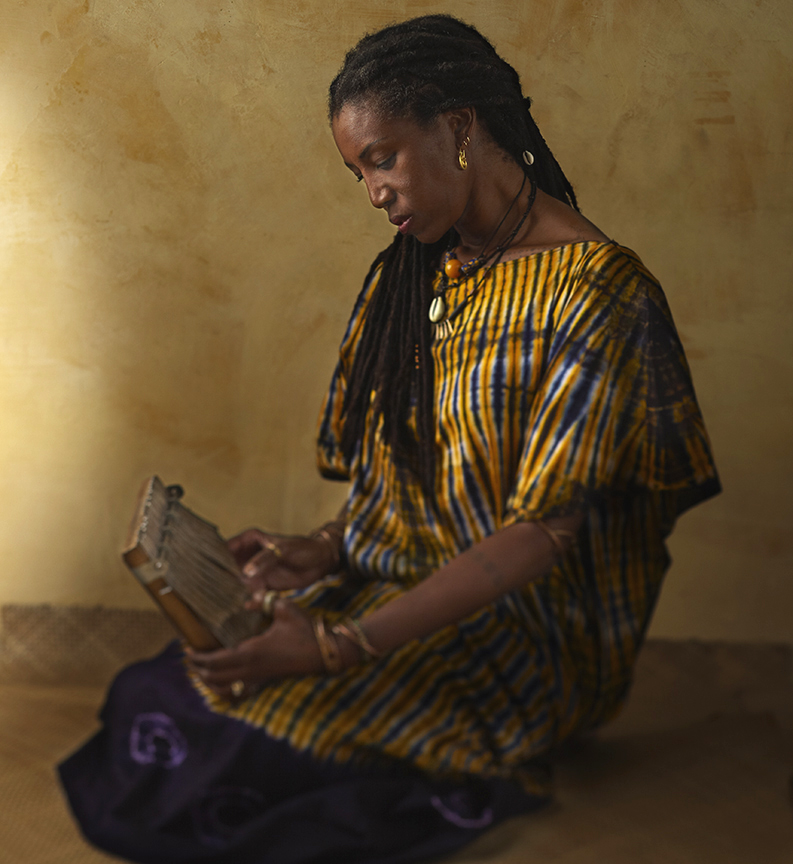 I’ve just acquired Zimbabwe: Traditions of the Shona People ― The Soul of Mbira. Most ethnological recordings are of limited interest to non-specialists, but the sound of the African instrument known as the mbira or kalimba is so delightful that a broad audience can enjoy this album. The album consists of recordings made in Zimbabwe by ethnomusicologist Paul F. Berliner. Berliner is the acknowledged authority on mbira music, and author of The Soul of Mbira, published in 1993 by University of Chicago Press. The mbira consists of a wooden sounding board, on which tuned iron keys are mounted. The keys are played by the thumbs. The music of the mbira, as it is played by the Shona people of Zimbabwe, is complex and polyrhythmic, often giving the impression of several instruments played at once. The form of mbira pieces, usually accompanied by a drum called the hosho, vaguely resembles the works of Philip Glass, in that complex repeating patterns slowly mutate over a long time. The mbira is documented in African culture as early as 1589, and is probably much older. It may be closely associated with the technology of iron smelting, which in turn is associated with the expansion of the Bantu-speaking peoples of Africa. There was very good quality iron smelting in the Mutapa Empire of the 13th to 17th centuries.
I’ve just acquired Zimbabwe: Traditions of the Shona People ― The Soul of Mbira. Most ethnological recordings are of limited interest to non-specialists, but the sound of the African instrument known as the mbira or kalimba is so delightful that a broad audience can enjoy this album. The album consists of recordings made in Zimbabwe by ethnomusicologist Paul F. Berliner. Berliner is the acknowledged authority on mbira music, and author of The Soul of Mbira, published in 1993 by University of Chicago Press. The mbira consists of a wooden sounding board, on which tuned iron keys are mounted. The keys are played by the thumbs. The music of the mbira, as it is played by the Shona people of Zimbabwe, is complex and polyrhythmic, often giving the impression of several instruments played at once. The form of mbira pieces, usually accompanied by a drum called the hosho, vaguely resembles the works of Philip Glass, in that complex repeating patterns slowly mutate over a long time. The mbira is documented in African culture as early as 1589, and is probably much older. It may be closely associated with the technology of iron smelting, which in turn is associated with the expansion of the Bantu-speaking peoples of Africa. There was very good quality iron smelting in the Mutapa Empire of the 13th to 17th centuries.
While the mbira has not spread out of Africa in the same way that the banjul (banjo) did, it has some afficianados in the rest of the world. Earth, Wind and Fire, the eclectic Chicago-based band of the 1970s, featured the kalimba. This is a variant of the mbira, tuned diatonically in the key of G, with the keys placed in a non-traditional manner (adjacent notes on the scale sitting on opposite sides). It was invented in the 1950’s and was an “export” version of the instrument, originally marketed by a New Jersey firm as a toy! Earth, Wind and Fire’s bandleader, Maurice White, became quite proficient on the instrument, and his performances helped rescue the instrument from its “toy” status.
0 Comments.